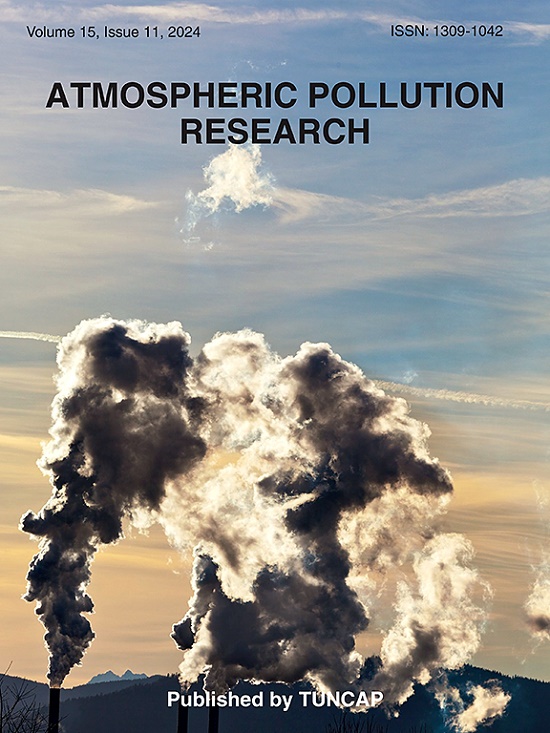Burn parameters affect PAH emissions at conditions relevant for prescribed fires
IF 3.9
3区 环境科学与生态学
Q2 ENVIRONMENTAL SCIENCES
引用次数: 0
Abstract
Wildfire smoke is a health hazard as it contains carcinogenic volatile compounds and fine particulate matter. In particular, exposure to polycyclic aromatic hydrocarbons (PAHs) is a major concern, since these compounds have been recognized as important contributors to the overall carcinogenic risk. In this work, gas and particle-phase PAH emissions from combustion of Eastern White Pine (Pinus strobus) were quantified using time-of-flight mass spectrometry over a range of burn conditions representative of wildfires and prescribed fires, including fuel moisture, heat flux, and oxygen concentration. We found that changing the burn environment lead to a variability of up to 77% in phenanthrene/anthracene emissions. This could explain a large part of the variability in PAH emission factors from biomass combustion reported in the literature. We found that optimal conditions for fuel moisture content of 20–30, sample heat load of , and oxygen concentrations of 5–15 can significantly reduce the emissions of heavy molar weight PAHs.
Our analysis showed that the relative carcinogenic risk from PAH exposure can be reduced by more than 50% under optimal conditions. In light of the increasing use of prescribed fire for forest management, the relationship between emissions and burn conditions that we have established provides a guidance for assessing the expected health impact from prescription burns, and can inform strategies to reduce PAH emissions from prescribed fire activities.

燃烧参数会影响多环芳烃在规定火灾相关条件下的排放
野火烟雾对健康有害,因为它含有致癌的挥发性化合物和细颗粒物。特别是,暴露于多环芳烃(PAHs)是一个主要问题,因为这些化合物已被认为是导致整体致癌风险的重要因素。在这项工作中,使用飞行时间质谱法对东部白松(Pinus strobus)燃烧产生的气体和颗粒相多环芳烃(PAH)排放进行了量化,测量了一系列野火和规定火灾的燃烧条件,包括燃料湿度、热通量和氧浓度。我们发现,燃烧环境的变化导致菲/蒽排放的可变性高达77%。这可以解释文献中报道的生物质燃烧中多环芳烃排放因子的很大一部分变异性。研究发现,当燃料含水率为20 ~ 30%,样品热负荷为60 ~ 70kWm−2,氧浓度为5 ~ 15%时,可显著减少重摩尔质量PAHs的排放。我们的分析表明,在最佳条件下,多环芳烃暴露的相对致癌风险可以降低50%以上。鉴于森林管理越来越多地使用规定的火灾,我们建立的排放与燃烧条件之间的关系为评估规定的火灾对健康的预期影响提供了指导,并可为减少规定的火灾活动中多环芳烃排放的战略提供信息。
本文章由计算机程序翻译,如有差异,请以英文原文为准。
求助全文
约1分钟内获得全文
求助全文
来源期刊

Atmospheric Pollution Research
ENVIRONMENTAL SCIENCES-
CiteScore
8.30
自引率
6.70%
发文量
256
审稿时长
36 days
期刊介绍:
Atmospheric Pollution Research (APR) is an international journal designed for the publication of articles on air pollution. Papers should present novel experimental results, theory and modeling of air pollution on local, regional, or global scales. Areas covered are research on inorganic, organic, and persistent organic air pollutants, air quality monitoring, air quality management, atmospheric dispersion and transport, air-surface (soil, water, and vegetation) exchange of pollutants, dry and wet deposition, indoor air quality, exposure assessment, health effects, satellite measurements, natural emissions, atmospheric chemistry, greenhouse gases, and effects on climate change.
 求助内容:
求助内容: 应助结果提醒方式:
应助结果提醒方式:


